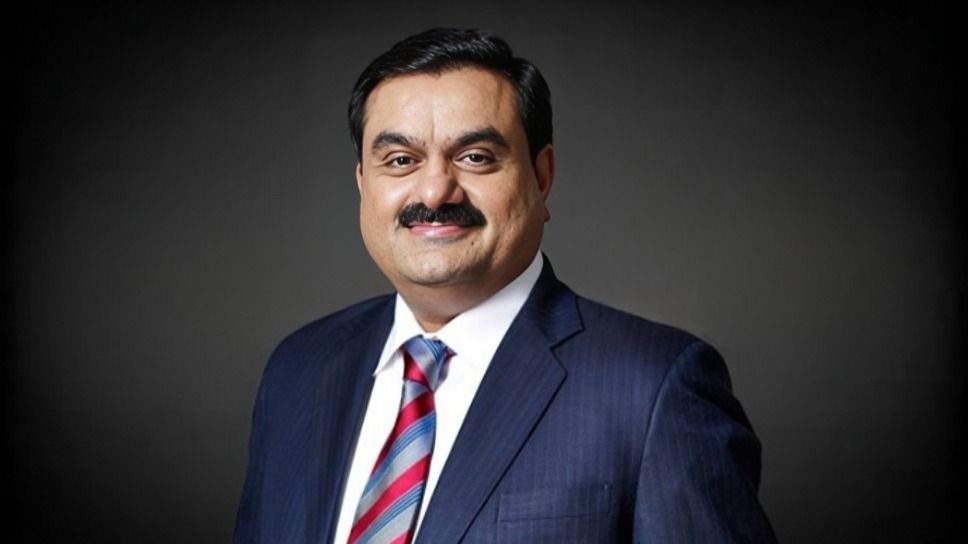India’s energy transition by 2030: The Adani Group has announced to invest over $100 billion or almost Rs 835 crore in projects concerning energy transition and that of manufacturing capability in order to produce every major component that is needed for green energy generation, billionaire Gautam Adani, Chairman, Adani Group said on Wednesday.
Apart from building solar parks for producing electricity derived from sunlight and wind-based farms, which perform the same action using wind, the large-scale conglomerate is building major facilities to manufacture electrolysers for making green hydrogen, wind power turbines and solar panels.
Green hydrogen, which is made by separating hydrogen from water with the help of electrolysers powered by clean energy, is considered as a potential panacea for decarbonising the industry as well as transportation.
Addressing the audience at the ‘Infrastructure – the Catalyst for India’s Future’ event of Crisil, Gautam Adani asserted that energy transition and digital infrastructure offer trillion-dollar opportunities, which can play a pivotal role in transforming India both at a domestic level as well as a global scale.
“The next decade will see us invest more than USD 100 billion in the energy transition space and further expand our integrated renewable energy value chain that today already spans the manufacturing of every major component required for green energy generation,” Adani added.
Least-expensive green electron
The Adani group, known for its coal-to-ports presence is keen to produce the “world’s least expensive green electron” that will become the feedstock for several sectors that must meet the sustainability mandate. “In order to make this happen, we are already building the world’s largest single-site renewable energy park in Khavda, in the district of Kutch (in Gujarat). Just this single location will generate 30 GW of power, thereby taking our total renewable energy capacity to 50 GW by 2030,” Adani further added.
Adani said the energy transition ecosystem will fundamentally change the global energy arena forever. “The global transition market was valued at approximately $3 trillion in 2023 and is expected to grow to nearly $6 trillion by 2030, and thereafter double every 10 years till 2050.”
“As many of you know, in the case of India, our country aims to install 500 gigawatts of renewable energy capacity by 2030. This ambitious target will require annual investments of over USD 150 billion dollars. The transition to green energy in India is expected to generate millions of new jobs in sectors such as solar and wind, energy storage, hydrogen and its derivatives, EV charging stations, as well as grid infrastructure development,” Gautam Adani further added.
Digital footprint
In terms of the digital infrastructure, Gautam Adani said it was of course the new oil and at the heart of all the action is the Data Centre, which he stated was the critical infrastructure needed to power all forms of computational needs, especially AI workloads for machine learning algorithms, natural language processing, computer vision, and deep learning.
This entire action is dependent on the ability to process data at an unprecedented speed and scale which are the precise capabilities that data centres provide. However, this will need massive amounts of energy, making the data centre business the largest energy-consuming industry in the world, he said.
“This makes the energy transition even more complex and is raising electricity prices, thereby adding to the already high prices because of the combined impact of climate change and demand growth,” Adani further said.
Gautam Adani, who spearheads different business forays of the group said that the infrastructure required for energy transition and the infrastructure required for digital transformation are now inseparable as the technology sector becomes the largest consumer of the precious green electrons.
Adani Group’s digital footprint will span industrial clouds across each of its businesses that it will productise and then take to market, operational technology cybersecurity offerings, super apps to leverage its B2C businesses across wide variety of consumer facing businesses,
Artificial Intelligence labs to capitalise on India’s fast emerging expertise to provide AI services to the world, and data centres that will form the backbone of the energy-intensive digital revolution.
“In fact, it is anticipated that by the year 2030, the world will need 100 to 150 GW of additional green energy just for the AI data centres. We already have India’s largest order book for data centres and are now in discussions for additional gigawatt-scale green AI data centres which we are uniquely positioned to deliver,” he said.
(With PTI inputs)

